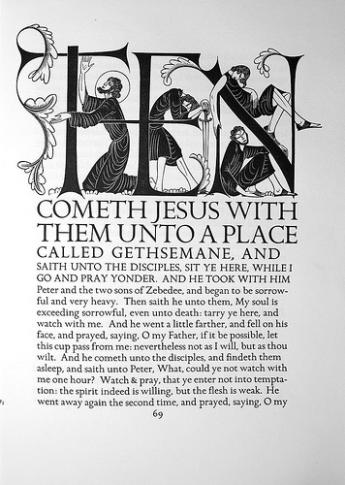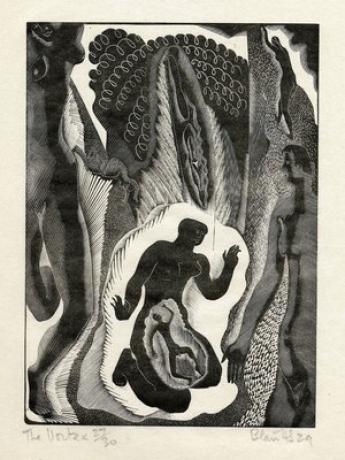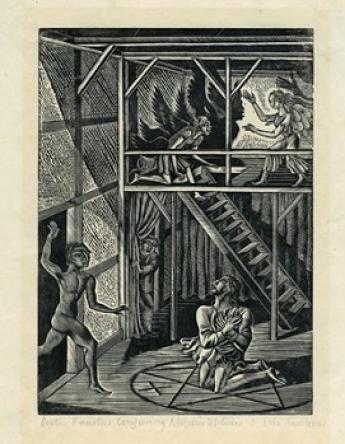Collecting Rare Books and First Editions - Wood Engraving and The Private Library

By L.D. Mitchell
Woodcuts had existed for over 1300 years by the time wood engraving developed in the 16th century. And it was another century before wood engraving achieved any sort of prominence, primarily through the work of Thomas Bewick.
Wood engraving typically allows an artist to achieve much finer detail than is possible with woodcuts. Wood engraver John Steins gives some insight into how such detail is achieved in this video.
Like the woodcut, wood engraving was eclipsed by the photomechanical illustration techniques that became widely available in the late 19th century. (For a while these processes existed simultaneously -- magazines like Harper's, for example, often printed several individual wood engravings as a single large electrotype.)
The ascendance of photomechanical illustration techniques probably saved wood engraving as an art form. (The need for a continuous and prodigious supply of wood engravings by mass market magazines had led to a serious degradation of artistic quality in wood engravings by the end of the 19th century.)
Wood engraving was derided for decades by many artists as merely a "reproductive technique," since the design of a wood engraving and the actual carving of a wood engraving generally were done as separate processes by separate people (as noted in a previous post). It was not until the 1930s that designer and engraver began to merge into the persona of a single individual, as several progressive artists began to use wood engravings as a way to bring art "to the masses."
As the design and the carving of wood engravings began to merge into the persona of a single individual in the 1930s (as mentioned in yesterday's post), the art form began to attract some of this past century's most talented illustrators: Eric Gill, Gwen Raverat, Paul Landacre, Agnes Miller Parker, Fritz Eichenberg ... the list is quite large. We're going to look at the work of a few of these talented individuals, and we're going to consider some specific ways in which we can most inexpensively build a private library of books illustrated by wood engravings.
To get some sense of the various styles represented in books illustrated by wood engravings, we begin with Blair Hughes-Stanton. Hughes-Stanton (1902-1981) is best known for the books he illustrated for several fine presses: the Golden Cockerel Press, the Cresset Press, the Gregynog Press and his own Gemini Press. During World War II, he was shot in the face and became a POW. Because this injury affected his three-dimensional vision, most of his best work predates that war. A lot of his wood engravings are somewhat abstract.
Clare Leighton (1898-1988) is best known for her wonderful wood engravings of agrarian life. Born in London, she emigrated to the United States in 1939, where she eventually became a naturalized citizen. Leighton is a popular artist for collectors of books illustrated by wood engravings, since she is known to have so illustrated at least 65 such books. Her work is exhibited in a number of major museums, such as the Metropolitan Museum of Art and the Art Institute of Chicago.
Eric Ravilious (1903-1942), like Blair Hughes-Stanton, is well known for wood engravings he did for the Golden Cockerel Press. However, his engravings reached a much wider public by virtue of his later illustrations for advertisements and book jackets. An Official War Artist during World War II, Ravilious was killed during a flying accident off the coast of Iceland. In 2004, the Imperial War Museum in London mounted a major retrospective of his work.
Lynd Ward (1905-1985) is best known for his wordless novels, the story being told entirely through Ward's wood engravings. Ward produced six such novels from 1929-1937, and left one unfinished at his death (this was published as a limited edition in 2001). He also produced a wordless novel for children, told entirely in lithographs, that was published in 1973.
Andy English (1956- ) is a modern wood engraver best known for the visual puns often found in his work. He also is well known for his bookplate engravings. One of the earliest proponents of using the Internet to teach wood engraving, his website is a must for wood engraving enthusiasts.
As was the case with woodcut-illustrated books, building a private library of books illustrated with wood engravings can be an interesting challenge, especially if one is attempting to build such a library as inexpensively as possible.
Surprisingly, even Thomas Bewick is collectible if you have modestly deep pockets. Copies of his magnum opus, the History of British Birds, are readily available in the marketplace, usually in the low four-figure range. His lesser works also are available, at not much more than one would pay for a couple of modern trade hardbacks.
Since it was not until the late 19th century that the demands of mass market magazines led to a demise in the quality of wood engraved illustration, most wood engraved books that were published from the late 18th-late 19th century will provide you with a good selection of books representative of this type of illustration. And, as was the case with woodcuts, since these books often have mixed types of illustration (both wood engravings and chromolithographs, for example), and often come in elaborate bindings, one can (as noted in a previous post) collect several book arts subjects at once. Of course, the very acidic quality of the paper and the often poor inking of the page will be problematic, and an appropriate storage environment will be necessary if you don't want your volumes quickly turning to dust.
Most collectors, though, seem to prefer building their private library around the titles illustrated by a particular wood engraver.
This collecting route can be a bit more expensive, since many wood engravers illustrated primarily private press titles, many of which were published in very limited editions. And landmark titles, such as Eric Gill's The Four Gospels, will require very deep pockets.
That said, a little research will unveil numerous wood engravers whose illustrated books exist in sufficient quantities that you won't "break the bank" collecting them. The following titles may prove helpful in your research: A History of British Wood Engraving (Albert Garrett, 1986); Endgrain: Contemporary Wood Engraving in North America (Patricia Ainsle & Paul Ritscher, 1994); Victorian Illustrated Books 1850-1870, the Heyday of Wood-Engraving: the Robin de Beaumont Collection (Paul Goldman, 1995):
To explore more works by contemporary wood engravers, go to the Society of Wood Engravers (UK) and Wood Engravers Network.
***
For many years L.D. Mitchell's blog The Private Library showed collectors that it is possible to build a collection without the benefit of much money. He published numerous articles on every imaginable subject of book collecting, he wrote about the most beautiful, the most important, the most common, the most attractive, the most unusual, the most interesting, the most extraordinary, the most amazing ... books one could read, buy, collect and simply enjoy. The Private Library has become an irreplaceable resource for all booklovers. Since April 2012, it is a static archive. L. D. Mitchell will no longer post new original content. ILAB is very grateful that he has given permission to publish some of his best articles and collecting tips from The Private Library on the ILAB website. Thank you very much, L.D.


